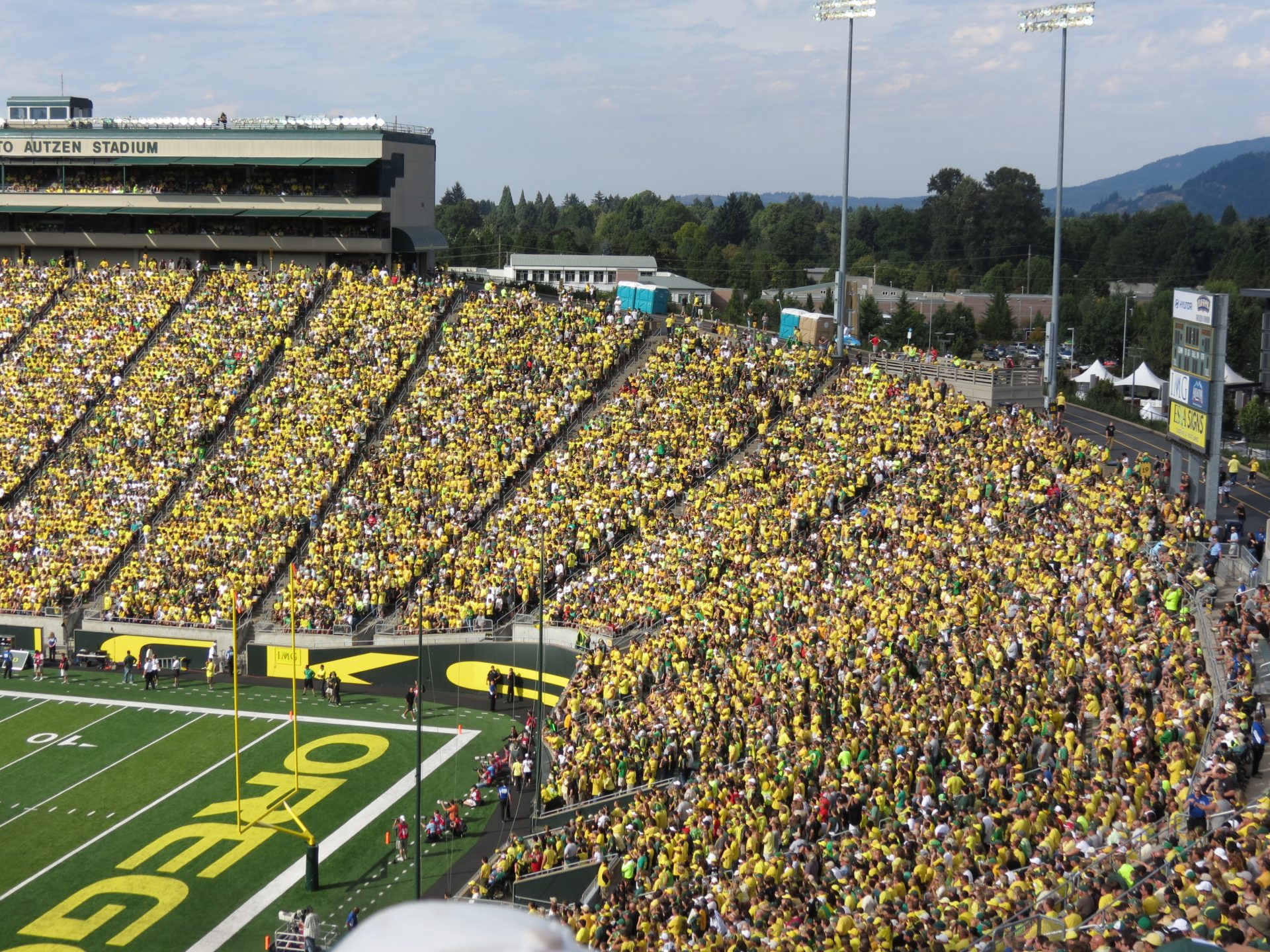
SHOULD COLLEGE ATHLETES be financially compensated for their incredibly profitable contributions to college sports programs? This is an argument that has endured throughout the last 30 years and little has been done to provide a cooperative resolution. Recently, the Supreme Court denied hearing an appeals case regarding a group of collegiate athletes requesting compensation for the commercialized use of their names and images. The denial for hearing thereby solidified the current set of nationwide rules stating that athletes may not receive financial compensation during their amateur collegiate careers.
The NCAA earns nearly $1 billion in revenue each year solely from college athletics. According to a 2015 study conducted by USA Today, hundreds of colleges throughout the nation earn millions more from their respective athletic programs. The 24 highest-earning colleges — including the University of Oregon which ranks 21st— each make over $100 million in additional revenue from their sports programs per year. Texas A&M alone rakes in $192 million in athletics-related revenue, over 84 percent of Lewis & Clark’s entire endowment fund.
With collegiate athletics programs roping in hundreds of millions of dollars in revenue for their respective schools, one is forced to wonder where all the money is spent. For many of the colleges, anywhere from half to nearly the entirety of the revenue is offset by related expenses. The NCAA alone exhausts over 90 percent of their revenue on expenses alone. Head coaches of more popular and/or televised college sports, most notably football, earn millions from schools for their work. According to another 2015 USA Today study, the top 71 highest-paid college football coaches — including #45 Oregon State and #30 University of Oregon — are each paid over $1 million per season. The head football coach from University of Alabama is paid over $7 million each season, including over $1 million in bonuses.
The exorbitant amounts both earned and spent by college athletics programs throughout the nation perfectly mirrors the American business model. More specifically, that those doing the actual work — the athletes — remain at the bottom of the hierarchy, while everyone above them benefits from their labor. Without careful investigation, the denial of payment for college athletes initially produces an image of unfair treatment and financial abuse. However, there are a few stark and notable differences worth mentioning, and one must not misinterpret the actual state of college athletics.
Unlike the vast majority of college students, many college athletes — predominantly those at larger Division I schools, and more specifically those participating in sports like football and basketball — are afforded comprehensive financial aid packages to attend college. Frequently, these come in the form of substantial or even “full ride” scholarships, and often purposefully overlook academic achievement in place of athletic achievement. The often complete removal of the financial burdens of tuition that plague nearly the entirety of American students and their families, and force many to forgo college altogether is perhaps the single greatest privilege offered solely to Division I college athletes. Furthermore, according to the NCAA, many colleges offer their student athletes additional stipends to cover “the cost of attendance,” usually a few hundred to a few thousand dollars each semester for vague and otherwise unmonitored expenditures.
Beyond simply financial privileges, the institutional advantages many college athletes receive can be somewhat shocking. The atmosphere surrounding seemingly untouchable athletes holds within it incredibly problematic implications. One ought not look any further than the whirlwind story of Brock Turner — a swimmer from Stanford convicted of rape and given a hand-slap as punishment — to reveal the power surrounding student athlete status. While the entirety of Turner’s story is aggravating, his status as a student athlete was used repeatedly throughout his trial in an effort to produce a more positive image of the rapist. A reference to Turner’s particular story is not to say college athletes use their statuses harmfully, but rather an example alluding to the fact that anytime young men and women are offered significant privileges not afforded to others within the same environment — scholastically, institutionally, economically or otherwise — some may abuse the system to their advantage.
The broader complexities of compensating college athletes is far beyond that of my own comprehension. For the vast privileges that college athletes do receive, it seems they might also be entitled to at least a percentage of the millions of dollars in profits their schools earn solely from their athletic abilities. Perhaps a fund for the pursuance of graduate school or post-collegiate research could be established for graduating college athletes.
In assessing the state of college athletics, primarily at the Division I level, one simply cannot ignore the preferential treatment athletes are given. With tuition, room, and board covered, stipends paid, and egos enlarged, what more can be set aside for college athletes without completely segregating them from the rest of the student body?
Subscribe to the Mossy Log Newsletter
Stay up to date with the goings-on at Lewis & Clark! Get the top stories or your favorite section delivered to your inbox whenever we release a new issue.

Leave a Reply